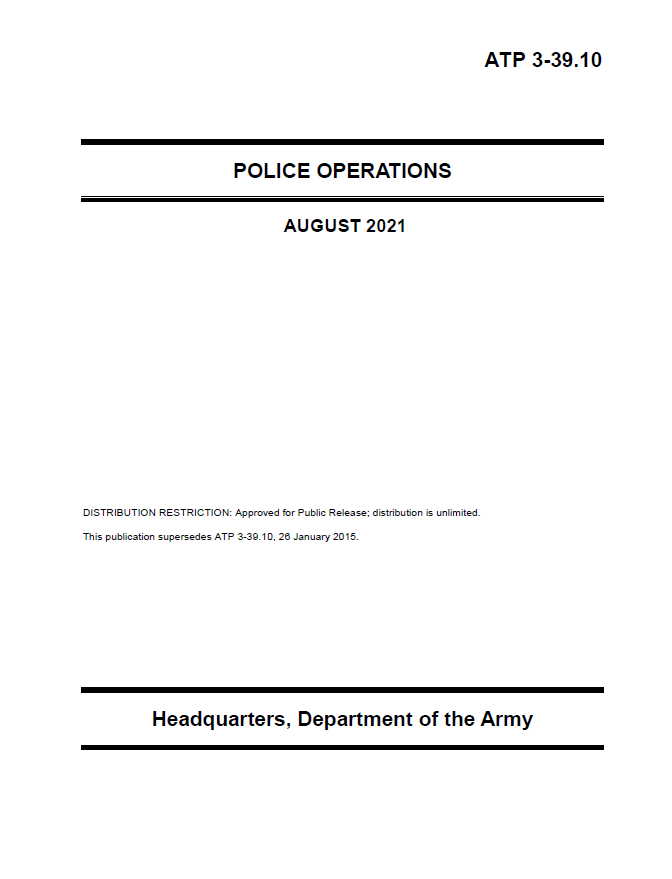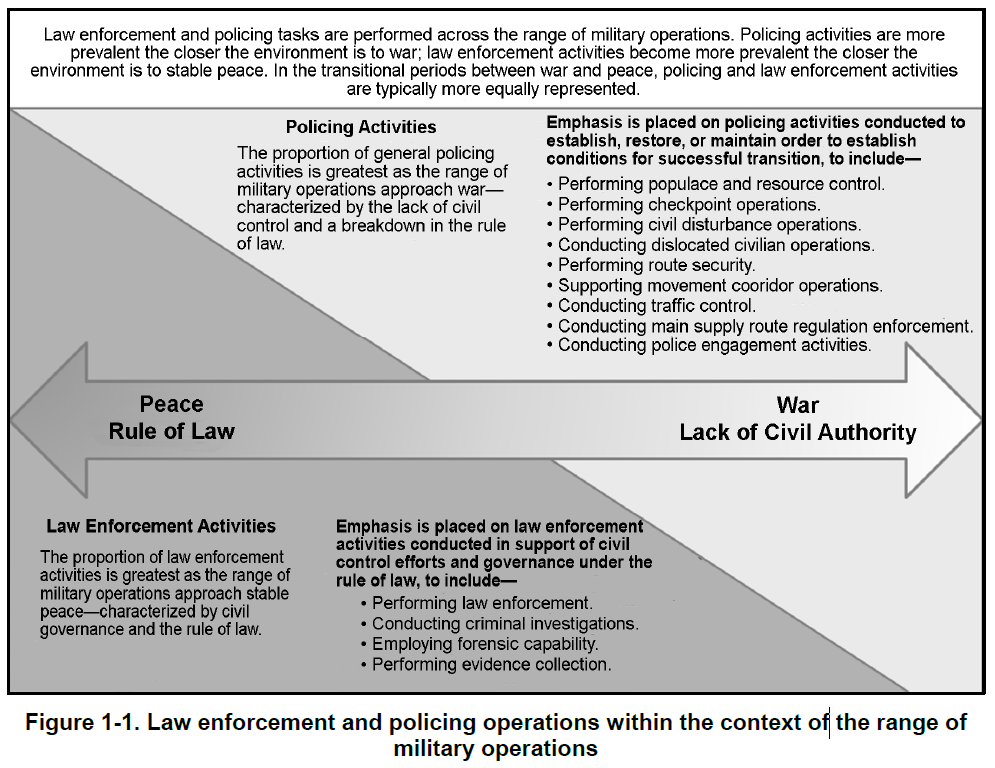ATP 3-39.10 provides guidance for commanders and staffs on police operations and is aligned with FM 3-39, the keystone military police field manual. This manual addresses police operations across the range of military operations. Police operations support decisive action tasks (offensive, defensive, and stability or defense support of civil authorities [DSCA]). This manual emphasizes policing capabilities necessary to establish order and subsequent law enforcement activities that enable successful establishment, maintenance, or restoration of the rule of law. While this manual focuses on the police operations discipline and its associated tasks and principles, it also emphasizes the foundational role that police operations, in general, play in the military police approach to missions and support to commanders.
…
Police operations have historically been understood to comprise of law enforcement missions supporting United States (U.S.) military commanders and efforts to police military personnel, civilians, and family members working and residing on U.S. military bases and base camps. Police operations support to the operational commander and the capabilities inherent within law enforcement organizations will continue to grow in relevance in support of Army operations. Future conflicts and the nature of the threat within the operational environment will increase the relevance of police operations and the need for law enforcement capabilities in support of Army operations. Police operations plays vital role in countering hybrid threats, reducing crime, establishing order, preserving readiness, and enforcing the rule of law. Police operations have shown their relevance in establishing civil security and civil control critical lines of effort supporting transfer authority to a secure and stable host-nation (HN) government.
Lessons learned from recent conflicts, coupled with task analysis conducted by USAMPS, Fort Leonard Wood, Missouri, have resulted in an expanded doctrinal framework and understanding of police operations. The expanded framework does not establish new tasks within the police operations discipline, but identifies and documents missions and tasks in the revised doctrine that have historically been conducted by military police. Recent updates to FM 3-39 establishes police operations as the primary military police discipline, shaping the actions and perspectives of military police in the conduct of military police disciplines. These updates describe police operations within the context of two activities—policing and law enforcement. Policing activities are general actions aimed at establishing order and stability within an area of operations (AO); law enforcement activities are tied to the rule of law and require authority to conduct the law enforcement activity
Beyond support to bases and base camps, the requirement for military police capabilities in training and supporting HN police is the most visible and resource-intensive police operations activity. Additionally, maneuver commanders recognize several key law enforcement enablers that greatly enhance and contribute to mission success, including—
- Expertise in evidence collection that is critical to successful site exploitation and criminal prosecution.
- Biometric collection, biometric identification capabilities, and modular forensic laboratories.
- Identification of critical civil information regarding the criminal environment, the HN police capability and capacity, and the local population, which is obtained through integrated police intelligence operations.
Military police capabilities are invaluable to the maneuver commander whether conducting law enforcement activities in support of bases and base camps, supporting protection requirements, maintaining and restoring order in an effort to stabilize an AO, providing training and support to HN police, controlling populations, or supporting humanitarian relief operations. No other U.S military force is as uniquely resourced, trained, and organized to provide policing capabilities in support of the Army and its joint partners.
…


